Why did I decide to kick off my MedTrek around Crete by heading counterclockwise through the birthplace of El Greco towards a seaside village romantically called Bali rather than go the other way?
Not only because I like the other Bali and the works of El Greco. But because I’ll also continue going west to Rethymno, where I’ve got some friends who know the best place to find grilled squid, and then to Chania, where I hope to meet the Walter Lassally, the Academy Award winning director of photography on “Zorba the Greek.”
This directional choice also gives me a chance to hike the fabled Samaria Gorge before the tourist season officially begins and should enable me to meet Canadian archaeologist Sandy MacGillivray in Palaikastro at the eastern tip of the island on schedule in mid-May.
My first day back on the path in 2011 started at the Dominican Monastery of Ayios Petros near the Heraklion port and ended thirty kilometers away at Fodele Beach (http://fms.ws/4e11F/35.40324/24.9592), just a few kilometers from the village of Fodele which is El Greco’s birthplace.
In between I had a stupendous cloud-shrouded view of Zeus’ profile lying quietly under Mount Giouthas; learned very quickly that the Crete seacoast is as rocky, steep, pathless and wild as it should be (the Michelin Green Guide writers were obviously on drugs when they wrote that “there is a marked route around the island”); confirmed that the goat/sheep population hasn’t been impacted by Greek’s economic problems; and was soaked from hair to toenail by a mid-April day of intermittent rain (also, I was told by a taverna owner, “as it should be.”)
I MedTrekked on the cliffy sea, up in the hills and on a national road during a 30-kilometer day that repeatedly necessitated stops to get out of the rain. But I was amazed to see one of Crete’s famously large vultures before I got out of Heraklion — and look forward to getting up close and personal with others when I go into the wild mountains.
My counterclockwise choice doesn’t mean I’m not equally excited about running into Zeus and his caved-inn birthplace, Knossos and King Minos’s labyrinth (the story of the Minotaur and the labyrinth has been one of my favorites since I was a kid) and other remnants of Minoan civilization. And, of course, I also plan to climb Mount Ida.
Until then, I’ll try to send my GPS coordinates from empty and pristine spots like Fodele Beach.
Don’t get the idea that the coast between Fodele Beach and Bali (pronounced Ba-lee) resembles this relatively tiny patch of virgin sand. The next twenty-two kilometers — which I MedTrek on the seaside, on country roads through villages like Sises, and on the national road when it’s the only option (Cretan drivers think the shoulder, which is the only place to walk, is the middle of the road) – are rough, rugged, steep and slippery.
This often puts me in the middle of springing-to-life hillsides, fields and orchards where I keep energized with oranges that I playfully pluck off fruit-burdened trees. Naturally I run into Greek Orthodox chapels of various sizes.
I’m also able to keep up with some new, to me anyway, agricultural advances that might date from Crete’s ancient Minoan culture. How, you might wonder, do the Cretans keep tree limbs growing correctly when they’re battered with the many different types of vicious Mediterranean winds? What’s the real reason that Cretan goats, and I constantly see goats cheating death as they traverse seaside cliffs, stay in their pens?
Crete’s Bali features a few small sandy beaches but no one would expect (and only The Idiot did expect) it to resemble its Indonesian counterpart. Still it’s a gem on the northern coast and looks alluring on approach.
I sent my SPOT tracking position from the port (http://fms.ws/4eQpn/35.4143/24.78329) while I explained my MedTrekking project to George, the owner of the Akrogialli taverna who’d seen me walking near the road when he drove to Heraklion earlier in the day. He was so impressed that I’d hoofed it to Bali (or that I thought Bali had anything to do with Bali) that he plied me with enough coffee to hike back to Heraklion.
Instead, I was revitalized enough to continue going west for another six kilometers despite George’s insistence that it’s impossible to walk near the sea.
I wound up near Panomos, just 25 or so kilometers from my next base camp in Rethymno, and tomorrow (April 22) I’m hanging in Heraklion, knocking about Knossos and mingling with Minos before I move west.
Text and Photos: Joel Stratte-McClure

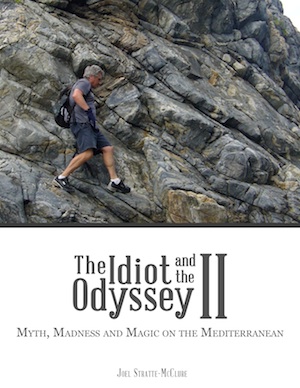


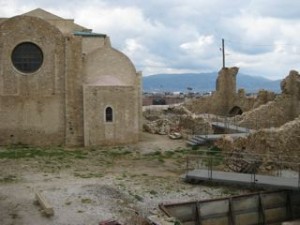
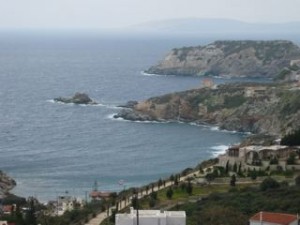

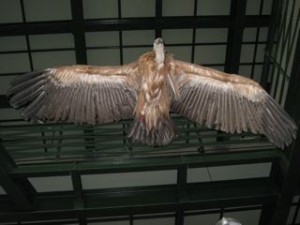
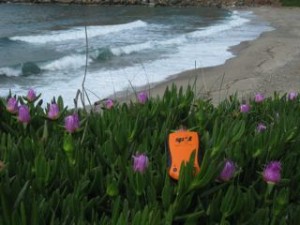
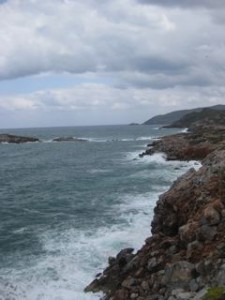
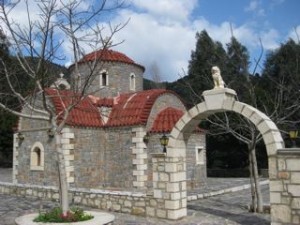
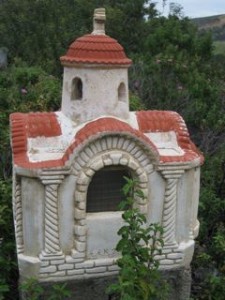
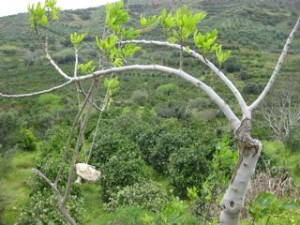
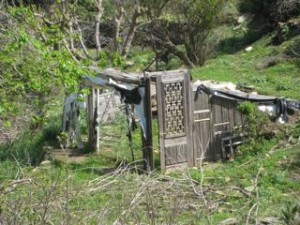
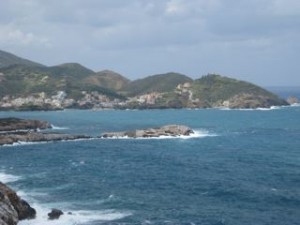
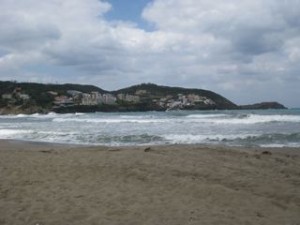
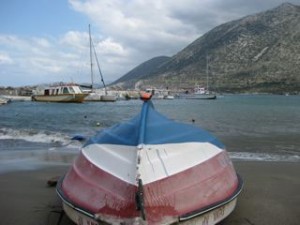
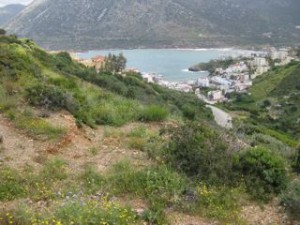

 Follow
Follow
Pingback: Twitter Weekly Updates for 2011-04-24 | Follow the Idiot